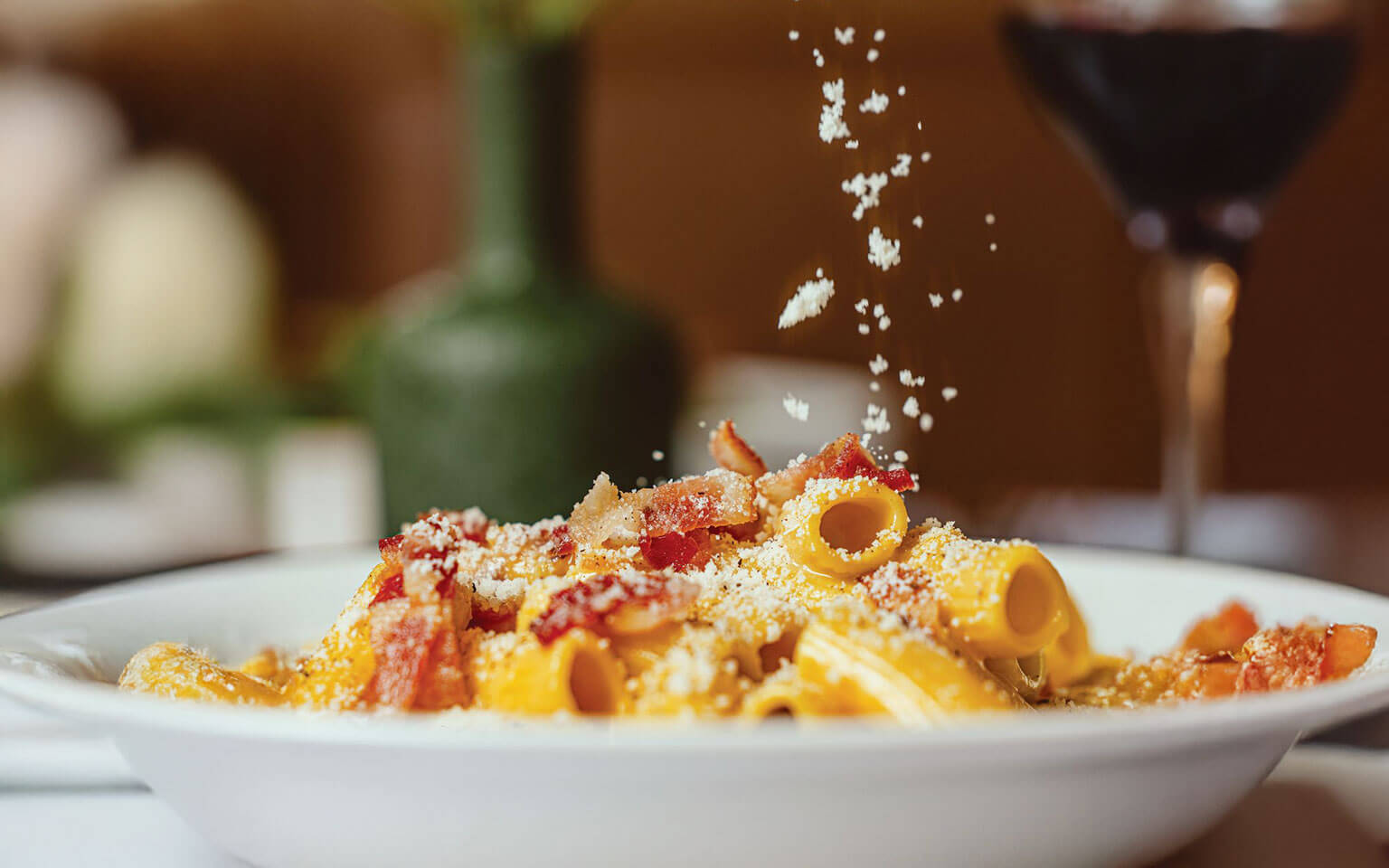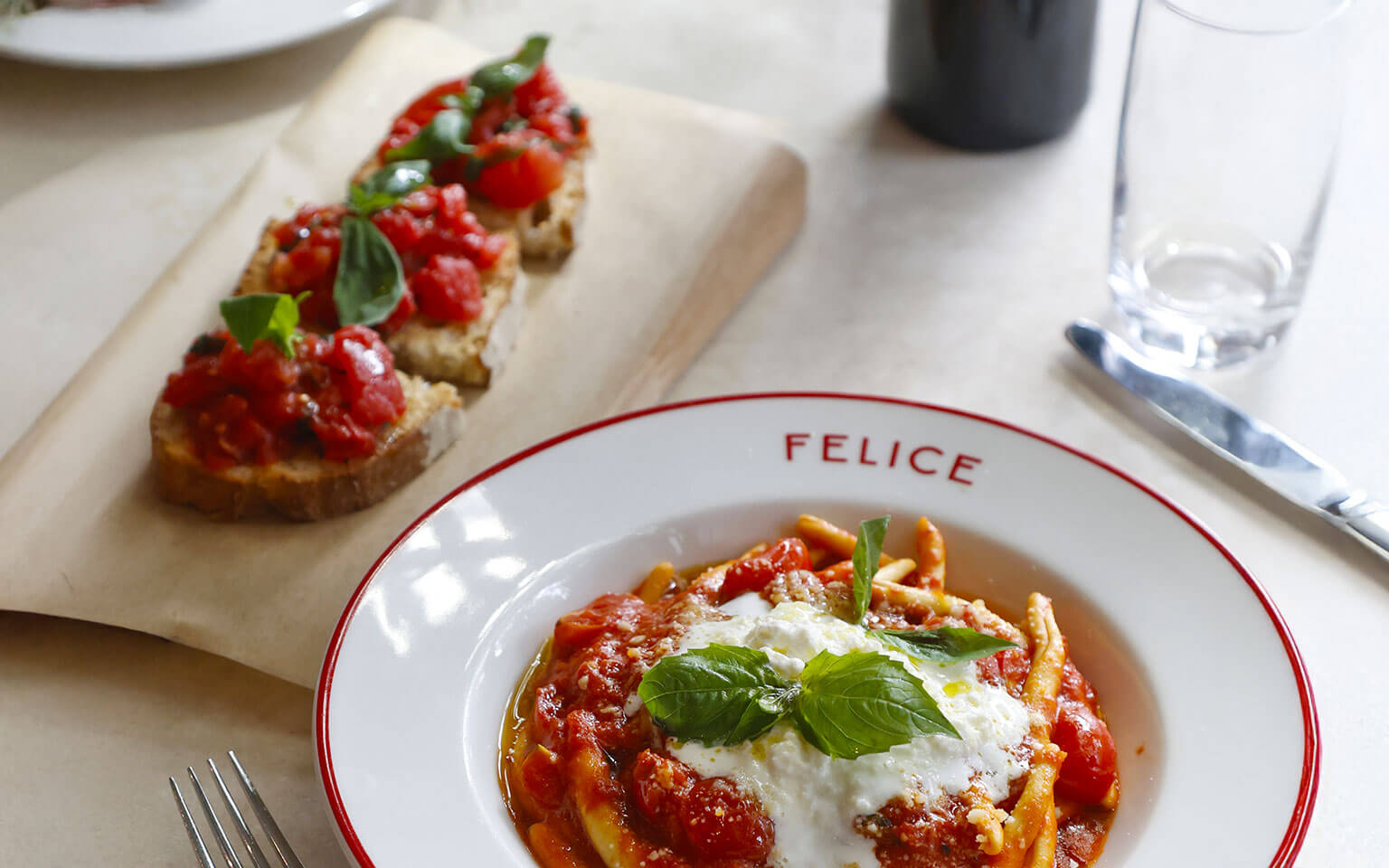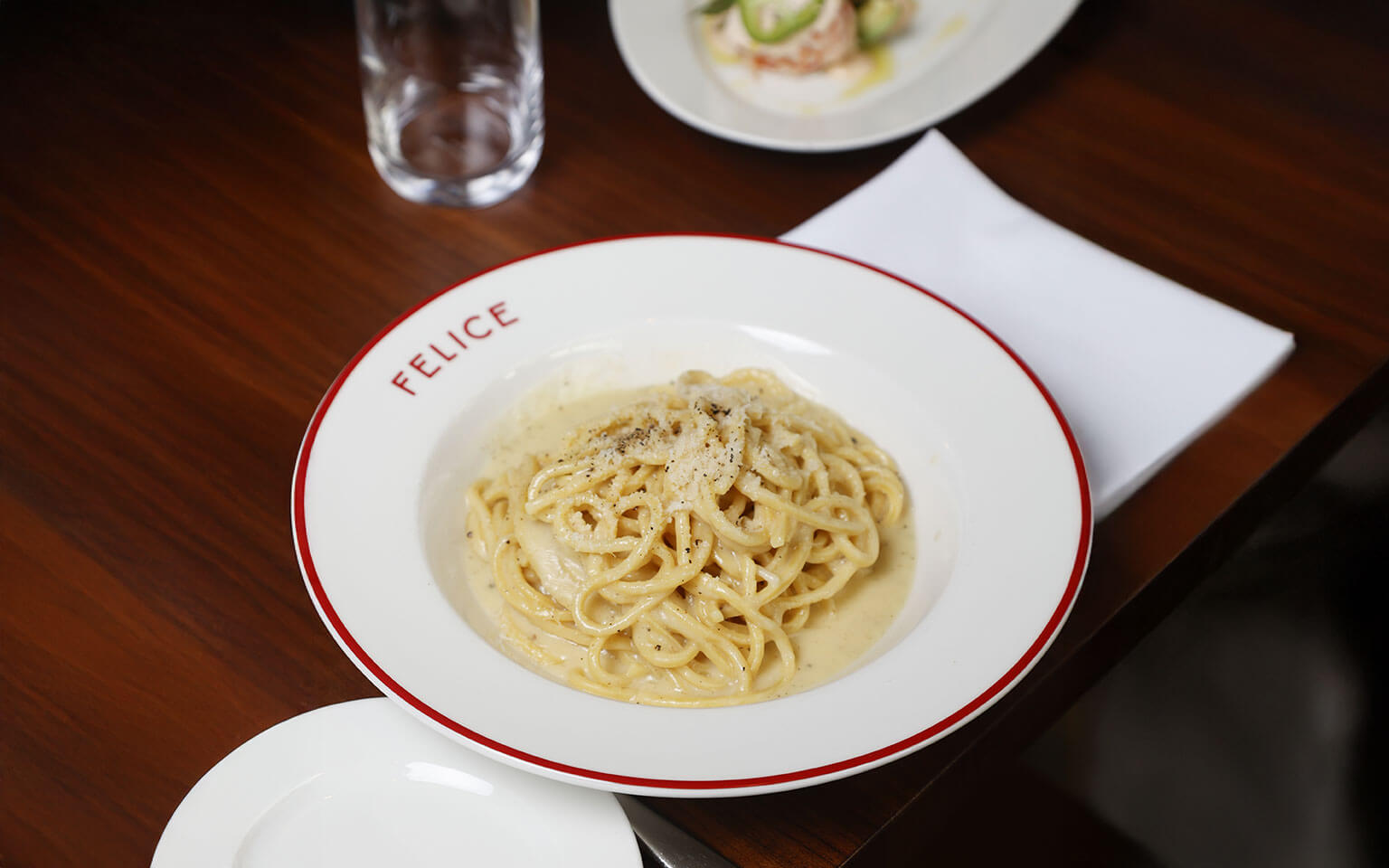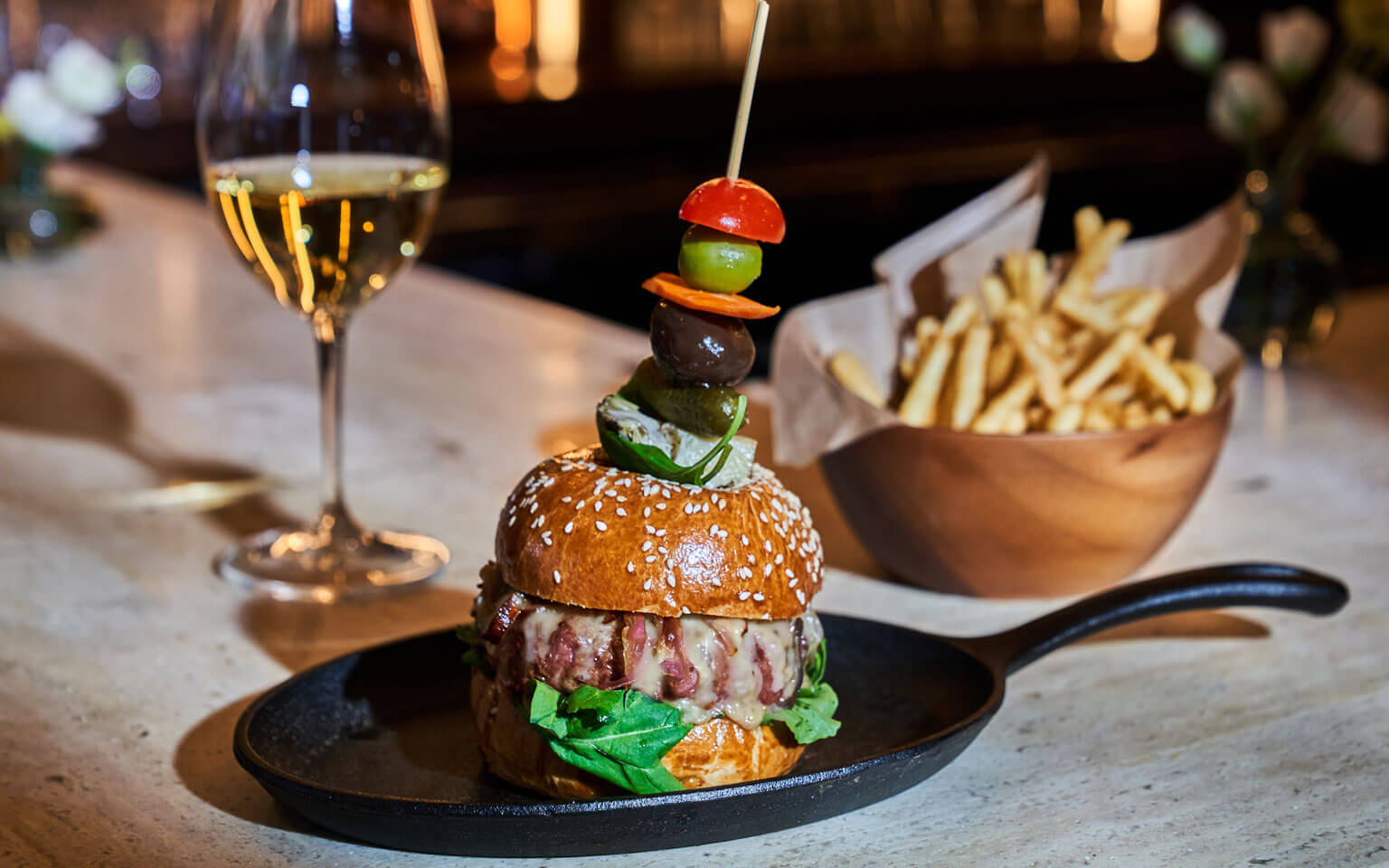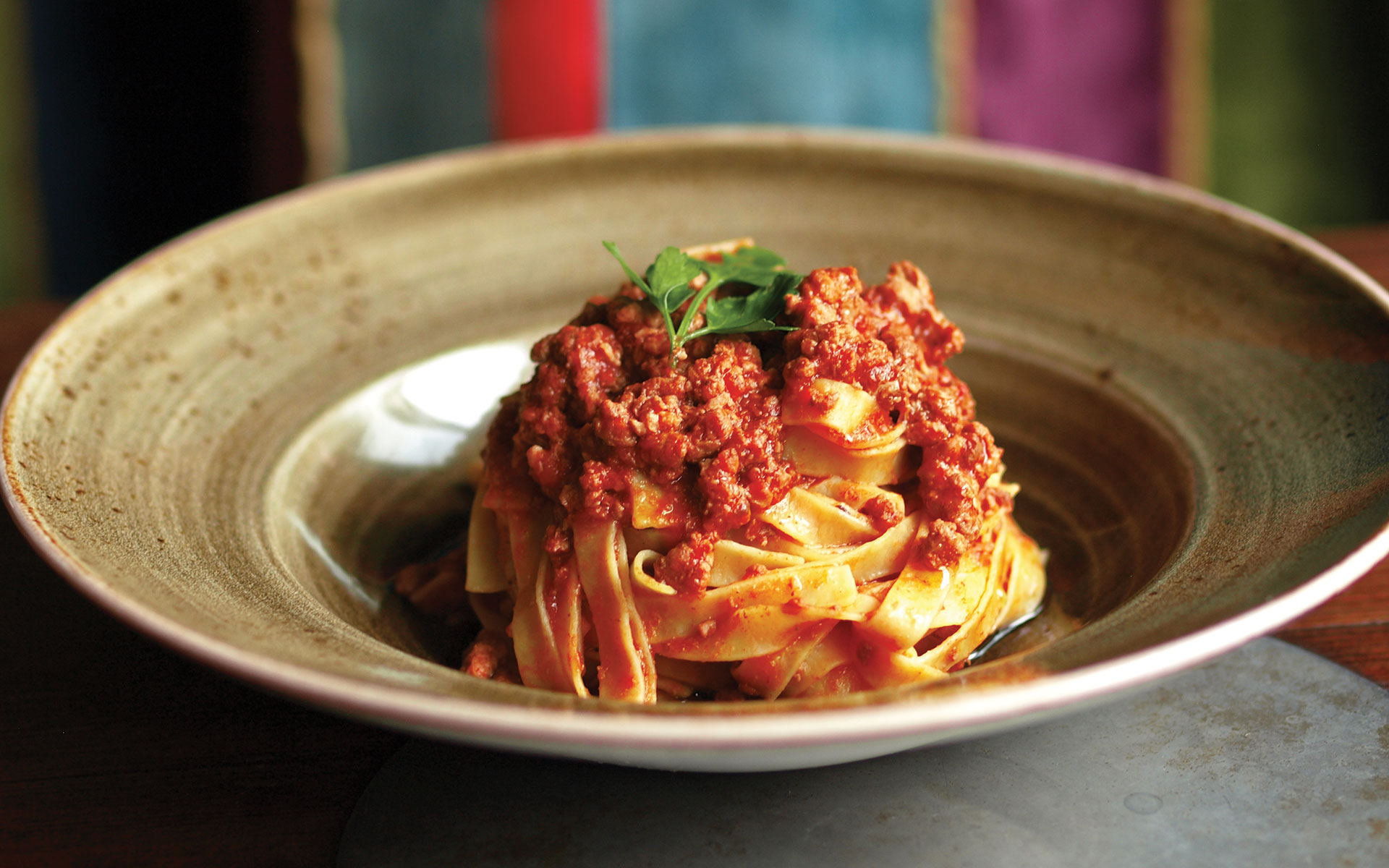A hearty, cozy dish often associated with the Lazio region, Pasta Alla Carbonara’s creamy, aromatic flavor comes courtesy of pecorino and guanciale. At Felice, we craft our carbonara with pecorino di fossa, a sharp sheep’s milk cheese that finishes its ripening wrapped in cloth underground in a straw-covered pit—a process which enhances its distinct flavor. The herbaceous profile of this cheese both cuts and complements the richness of whisked egg yolks and bits of seared guanciale.
The critical moment of this preparation happens as the sauce comes together in the hot pan with a few tablespoons of salted pasta water. Afterwards, the egg yolks and half the cheese are stirred together steadily and vigorously whilst being tossed with the al dente spaghetti.
To plate the pasta professionally, use a ladle and precision plating tongs. Gather the pasta in the ladle, twirling with the tongs. Gently guide the ladle to the deep plate and slide pasta off, keeping the tongs upright to keep the pasta in a cone shape.
METHOD
Finely grate Pecorino di Fossa. Separate the egg yolk from the whites. Whisk egg yolk with salt and pepper and set aside. Cut guanciale into 1⁄4 inch slices. In a sauté pan, heat to medium high heat and sear until browned. Remove from the excess fat and place on a plate lined with a paper towel.
Fill a pot with water. Heat at high until boiling. Add a healthy dose of salt and drop the spaghetti into the pot. Cook 9-11 minutes until al dente. Reserve 2 cups of pasta water, and strain pasta.
Place cooked guanciale into a sauté pan on medium high heat. Season with black pepper and add 2-3 tablespoons of boiling pasta water. Add cooked pasta to the sauté pan and mix pasta 30 seconds to create a creamy consistency. Remove from heat and add organic whisked eggs and half the Pecorino di Fossa, stirring continuously until well combined and glossy. Plate pasta in deep plates*, finishing with remaining Pecorino di Fossa and Tellicherry black pepper.
